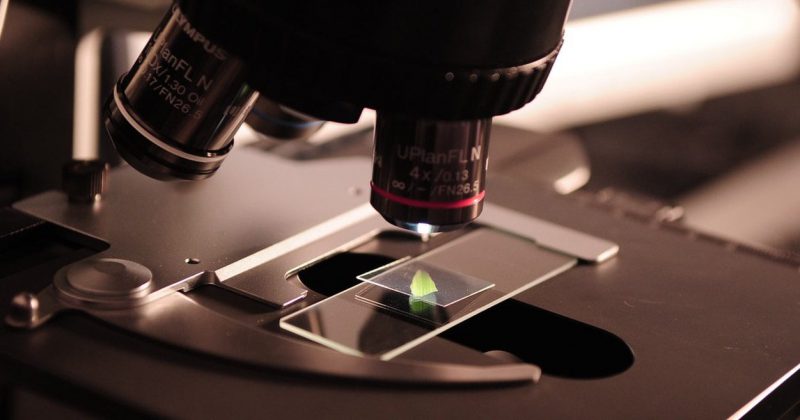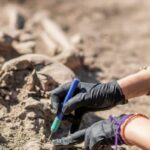We explain what scientific research is and what its elements are. Also, what types of scientific research exist.

What is scientific research?
scientific research it's a reflection, control and criticism procedure that seeks to provide new datafacts, relationships or laws in any area of scientific knowledge. Science uses research to discover new knowledge and to reformulate existing knowledge.
People who carry out this kind of research are called scientists. Because they must have the necessary resources to sustain research for as long as it demands, many countries offer scholarships and incentives for scientific research.
Scientific ethics is the set of ethical principles that underlie all inquiry in science. It generally contemplates not causing avoidable suffering to experimental animals and respecting the confidentiality of individual data.
See also: Non-experimental research
Elements of a scientific investigation
Scientific research is made up of three elements:
- Object. That which is investigated, that is, the topic on which it is investigated. Since man's knowledge of the world is not complete, all research is historical and spatial.
- Half. Set of techniques that are appropriate to carry out a specific investigation. The most used method in empirical sciences is the scientific method, which has steps in which a hypothesis is tested to obtain accurate and useful information.
- Purpose. Establishes the reasons why the investigation is launched.
On the other hand, we must remember that the steps of the scientific method are:
- Observation of the phenomenon
- Collection of relevant data for that observation
- Formulation of a hypothesis
- Experimentation to verify the hypothesis
- Conclusion
Types of scientific research

Research can be classified from different areas:
According to your purpose:
- Pure research. Try to increase theoretical knowledge of a subject.
- Applied research. Aim to discover knowledge that has immediate application to reality.
Based on prior knowledge:
- Exploratory research. Look for an overview of a new topic of study.
- Descriptive research. It seeks to make known the structure or operation of some issue.
- Explanatory research. Seek to find the laws that determine certain behaviors.
According to the data:
- Quantitative research. It uses data that can be expressed numerically.
- Qualitative research. It uses data that cannot be expressed numerically.
According to the means that have to be investigated:
- Documentary research. Analyze data obtained from different sources.
- Field research. Collects data from the place where the event occurs.
- Experimental research. The researcher creates the conditions to establish the cause-effect relationship of the phenomenon.
Importance and objectives of scientific research
Research is one of the fundamental pillars within the world of science, since allows finding the causes and characteristics of certain phenomena. Thanks to it we know more and better about human beings and the environment that surrounds them.
scientific research is responsible for the development and evolution of individuals and societiesit is through it that advances and discoveries are achieved in very varied fields such as medicine, psychology, astronomy, biology, among many other sciences. Its main objective is to acquire knowledge to predict and deal with problems that arise.
For these reasons, it is essential that research is encouraged and supported. Societies must become aware of the importance of observing, analyzing and studying data that They can respond and solve various problemsfor example, those that affect the physical and mental health, education or lifestyle of individuals.
Stages of scientific research

- Presentation of the topic of interest. You must define the field of study in which you are interested in conducting the research.
- Problem identification. Within the chosen field of study, a question arises to be resolved.
- Statement of the objective and hypothesis. Through a hypothesis (possible answer to the problem) the objective pursued by the research is determined.
- Definition of the theoretical framework. All studies, theories or reports that exist on the topic of interest are investigated. It is important that research provides new and useful information for the field of study.
- Methodology application. The techniques and instruments to be used to carry out the research are chosen. In the case of the scientific method, an attempt is made to verify the hypothesis through experimentation.
- Report writing. The results obtained provide information from which conclusions are drawn. The steps of the research process and the conclusions must be written in writing.
- Dissemination of results. The conclusions obtained in the research are communicated to the scientific community or interested group.
Examples of scientific research
- Argentine National Registry of Cardiogenic Shock
Authors. Yanina B. Castillo Costa, Mauro J. García Aurelio, Víctor M. Mauro, Ricardo Villareal, Alfredo C. Piombo, Stella M. Macín, Francisco Mansilla, Rubén Kevorkian, Horacio M. Zylbersztejn, Juan A. Gagliardi.
Introduction. Cardiogenic shock is a serious complication of acute myocardial infarction and constitutes one of its main causes of death, despite which the information in our environment is limited.
Aim. To know the clinical characteristics, treatment strategies and in-hospital evolution of cardiogenic shock in Argentina.
Material and methods. A prospective, multicenter registry of patients hospitalized with cardiogenic shock in the context of acute coronary syndromes with and without ST segment elevation was carried out between 2013 and 2015 in 64 centers in Argentina. Results: 165 patients were included, with a mean age of 66 (58-76.5) years; 65% were men. 75% of cases had acute coronary syndrome with ST segment elevation. 8.5% were associated with mechanical complications and 6.7% with right ventricular involvement. 56% had cardiogenic shock upon admission. 95% required inotropes, 78% mechanical respiratory assistance, 44% Swan-Ganz catheter, and 37% intra-aortic balloon pump. 84% of ST-segment elevation acute coronary syndromes (104/124 patients) were reperfused. The median time from the onset of symptoms to admission was 240 minutes (132-720). 80% received primary angioplasty. Overall in-hospital mortality was 54%, with no differences between acute coronary syndromes with or without ST segment elevation. Likewise, there was no difference in the frequency of events and procedure use between acute coronary syndromes with or without ST-segment elevation.
Conclusions. The characteristics of cardiogenic shock in Argentina do not differ much from populations in other parts of the world. Morbidity and mortality are high despite the use of available treatment strategies.
Complete investigation at: https://www.sac.org.ar/wp-content/uploads/2017/04/Resultados-Registro-Shock-2017.pdf
- Causality of chronic kidney disease in the child population of the State of Aguas Calientes, Mexico.
Institution/Company. Autonomous University of Aguascalientes
Technical manager. Dr. María Consolación Saldaña Martínez
Development area. Health
Specific demand that the project addresses. Causality of chronic kidney disease in the child population of the state of Aguascalientes.
General objective. Determine the risk factors that increase the probability of chronic kidney disease occurring in the child population of the municipalities of the state of Aguascalientes with a high incidence of this public health problem.
Methods.
- Characterization of the quality of drinking water supplied by the municipal network to the population of the municipality of Calvillo, Ags., and the possible presence of nephrotoxic metals in soil and residential dust.
B. Analysis of water, soil and residential dust samples to demonstrate the existence of various nephrotoxic substances.
Conclusions.
-The exposure doses of fluorides and As in drinking water exceed the established DRf (27-90% and 7-49% of the population, respectively). This implies that the population of the municipality of Calvillo is severely exposed to fluorides, and, to a lesser extent, to As, the most affected age group is the child population (approximately 36.7% of the total population of the municipality).
-The hazard index (HI) due to joint exposure to As and fluorides exceeded the permissible value of 1, so there is a risk of causing damage to various organs due to exposure to these two contaminants.
-The high levels of blood lead found in some individuals in the study (Pb in blood > 10 μg/L) are not related to water, soil or dust as a source of exposure, but to other sources not studied in this project. Exposure to mercury and cadmium turned out to be low enough to not represent any toxicological evidence of their relationship with the high rate of chronic kidney disease (CKD) in the population studied. A high exposure to fluorides was observed, being significantly higher in the population affected by CKD. The average fluoride content in drinking water supply sources (2.1 mg/L) coincides with the level reported as a factor of kidney and liver damage (2 mg/L). Consequently, the consumption of water with a high fluoride content has special importance as a relevant factor in the high prevalence of CKD in the municipality of Calvillo.
-A probable correlation was observed between the joint presence of high exposures to fluorides, As, Pb with a high prevalence of CKD. In the El Chiquihuitero community, a high exposure to Fe and Mn was also noted. Consequently, the multifactorial origin of the prevalence of CKD becomes evident.
It is necessary to develop feasible and efficient strategies throughout the entire municipality of Calvillo to reduce exposure to contaminants such as fluorides and arsenic (especially fluorides), given the high concentrations found and the exposure doses they represent. According to the risk analysis, the ingestion of drinking water from the wells that supply the affected communities is the main source of exposure to the nephrotoxic substances studied (fluorides and As).
Complete investigation at: http://www.foroconsultivo.org.mx/libros_editados/fomix_investigacion.pdf
- Renal and pancreatic lesions induced by Ipomoea carnea in goats
Authors. Rios, E.; Cholich, Luciana Andrea; Teibler, Gladys Pamela; Attorney, Facundo Ariel; Mussart, Norma Beatriz; Renal and pancreatic lesions induced by Ipomoea carnea in goats; National University of the Northeast. Faculty of Veterinary Sciences; Veterinary Magazine; 20; 1; 7-2009; 45-49
Introduction. Pomoea carnea is a toxic plant due to the alkaloids swainsonine and calistegins, which causes economic losses in animal production in northeastern Argentina.
Aim. The purpose of this study was to describe the microscopic lesions verified in the pancreas and kidney, as well as the changes in the renal biochemical profile caused by experimental poisoning with I. carnea in goats.
Methods. 9 goats fed with alfalfa were used; 4 of them acted as witnesses and the remaining 5 were subjected to the ingestion of I. carnea leaves at a rate of 50 g/kg/day for 53 days, the date on which they were sacrificed due to the serious deterioration of their health. Clinical examinations and blood and urine extractions were performed weekly. Urea and creatinine progressively increased their serum concentration in the intoxicated animals, who also revealed abnormalities in the urinalysis. The most affected organs were pancreas and kidney. In addition to the cytoplasmic vacuolization described by other authors, in the present study the presence of intratubular eosinophilic content and widening of Bowman's space in the kidneys was confirmed, damages that would explain the abnormalities detected in urine and blood. Such changes are useful when diagnosing this poisoning.
Complete investigation at: https://ri.conicet.gov.ar/handle/11336/61306
Continue with: Research report
References
- “National System of Researchers” at CONACYT.
- “Institutional Repository” in CONICET.
- “Finalized records” in the Argentine Society of Cardiology.





